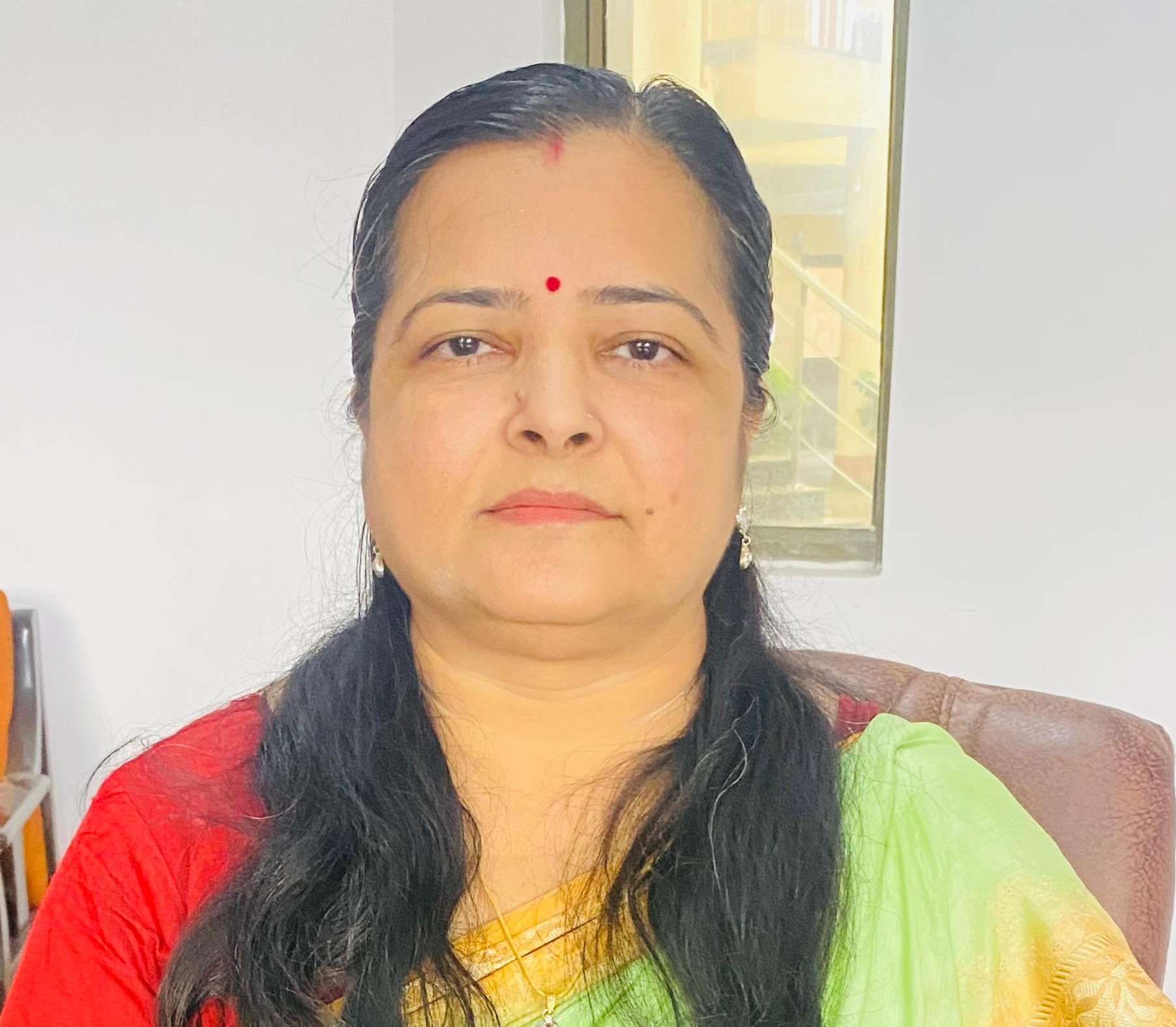Lomustine loaded chitosan nanoparticles: characterization and in-vitro cytotoxicity on human lung cancer cell line l132.
The aim of this work was to prepare chitosan nanoparticles loaded with antineoplastic drug Lomustine (LCNPs), by ionic-gelation method with homogenization. The nanoparticles were characterized for particle size, polydispersity index (PDI), surface morphology, encapsulation efficiency, in-vitro drug release and cytotoxicity on human lung cancer cell line L132 by 3-(4,5-dimethylthiazol-2-yl)-2,5-diphenyltetrazolium bromide (MTT) assay. The particle size, zeta potential and encapsulation efficiency of prepared nanoparticles ranged from 75±1.1 to 637±1.6 nm (PDI from 0.05±0.001 to 0.18±0.007), 37.2±0.21 to 53.8±0.18 mV and 66.74±1.4 to 98.0±1.8% re- spectively. The particles were spherical in shape with smooth surface in scanning electron microscopy (SEM) and transmission electron microscopy (TEM) images. Mechanical shearing by homogenization treatment significantly changed the nanoparticle size. The drug release rate was biphasic and diffusion controlled over the 8 h. LCNPs greatly inhibited the growth of the L132 cancer cell line used in this study in comparison to the native Lomustine (LMT).
Analysis of perinatal mortality in aden general hospital: a hospital-based study from yemen
Background: Perinatal mortality remains high in developing countries, including Yemen. However, information on perinatal mortality in Yemen is lacking. This study aimed to find out the perinatal mortality rate in Aden General Hospital and to analyze the causes of perinatal mortality. Materials and Methods: This descriptive study was conducted at the Obstetrics and Gynecology Department of Aden General Hospital during the period from January 1, 2003 to June 30, 2004. It was a retrospective study for the first 6 months (January–June 2003) and prospective for the remaining period (July 2003–June 2004). Results: During the study period from January 1, 2003 to June 30, 2004, there were a total of 3770 births at Aden General Hospital, out of which there were 2976 births during the period from January to December 2003 and a further 794 births in the 6-month period from January to June 2004. The perinatal deaths were 166 (4.4%) giving a perinatal mortality rate of 44/1000 normal deliveries. Further analysis showed a total of 105 perinatal deaths in 2003 with a perinatal mortality rate of 35.3/1000 normal deliveries and 61 deaths in the period from January to June 2004 with a rate of 77/1000 normal deliveries. Unclassified deaths including premature cases accounted for 29% (n=48) of all causes, followed by mechanical causes 36 (21.7%). The mechanical causes are divided as follows, 33 (19. 9%) due to fetal distress and 3 (1.8%) due to breech presentation. Uncertain origin causes accounted for 19.3% (n=32) of all cases of death and toxemia was observed in 16 cases (9.6%), while malformation was found in 13 (7.8%) cases. Conclusion: The perinatal mortality rate in our center was 44/1000 deliveries. The major cause of perinatal mortality was prematurity, followed by mechanical causes. The most of the mortalities occurred outside the health facilities (extra-hospital).
Perspective on health care in india and libya: a short commentary
With a few years of teaching medical students and witnessing the status of medical education and health care delivery in Libya, for a decade or more, a reflection of what is happening in Libya, the country which has given respect and economic freedom to a teacher like me. The Republic of India, a South Asian country is the seventh largest nation by area, the second most populous country and the most populous democracy in the globe. One of the fundamental rights of the Indian constitution is the ‘Right to life’ which translates to “Right to Health”. India is a Federal country with 29 states and eight union territories [1]. Indian health care is taken care of by the States by organizing and delivering health care and the Central Government takes responsibility for international health treaties: medical education, prevention of food adulteration, quality control in drug manufacturing, national disease control and family planning. Indian health care under the public sector is provided free to people who are below the poverty line. Indian Public Health sector caters to 18.0% of total patient care and 44.0% of total in patient care. The total expenditure for health care is around 04.0% of the GDP and out-of-pocket expenses are around 69.0%. If it is calculated the cost of health care is around 1700 Indian rupees/capita/year [2]. It is true of Libya also. It has its national health a policy with free medical care and policy to cater to the needs of the Libyan people. With the civil unrest, and a transient locally elected government, Libya finds itself in very critical situation related to its economy and public services including public health. The hospitals built and their destruction because of the civil war lie in a very demanding conditions with poor supply chains and logistics to maintain the necessary demand and supply situation. The health care personnel physicians, nurses and public health workers are competent. They have to operate in a trying condition to save lives with limited healthcare facilities in the form of drug, medicine and medical equipment.
 Mediterranean journal of pharmacy and pharmaceutical sciences
Mediterranean journal of pharmacy and pharmaceutical sciences
The art of public speaking pdf
The Art of Public Speaking BY J. BERG ESENWEIN AUTHOR OF "HOW TO ATTRACT AND HOLD AN AUDIENCE," "WRITING THE SHORT-STORY," "WRITING THE PHOTOPLAY," ETC., ETC., AND DALE CARNAGEY PROFESSOR OF PUBLIC SPEAKING, BALTIMORE SCHOOL OF COMMERCE AND FINANCE; INSTRUCTOR IN PUBLIC SPEAKING, Y.M.C.A. SCHOOLS, NEW YORK, BROOKLYN, BALTIMORE, AND PHILADELPHIA, AND THE NEW YORK CITY CHAPTER, AMERICAN The Art of Public Speaking by Dale Carnagey (AKA Dale Carnegie) and J. Berg Esenwein 2 INSTITUTE OF BANKING THE WRITER'S LIBRARY EDITED BY J. BERG ESENWEIN THE HOME CORRESPONDENCE SCHOOL SPRINGFIELD, MASS. PUBLISHERS Copyright 1915 THE HOME CORRESPONDENCE SCHOOL ALL RIGHTS RESERVED TO F. ARTHUR METCALF FELLOW-WORKER AND FRIEND Table of Contents Page THINGS TO THINK OF FIRST--A FOREWORD IX CHAPTER I --ACQUIRING CONFIDENCE BEFORE AN AUDIENCE 1 CHAPTER II --THE SIN OF MONOTONY 10 CHAPTER III --EFFICIENCY THROUGH EMPHASIS AND SUBORDINATION 16 CHAPTER IV --EFFICIENCY THROUGH CHANGE OF PITCH 27 CHAPTER V --EFFICIENCY THROUGH CHANGE OF PACE 39 CHAPTER VI --PAUSE AND POWER 55 CHAPTER VII --EFFICIENCY THROUGH INFLECTION 69 CHAPTER VIII --CONCENTRATION IN DELIVERY 80 CHAPTER IX --FORCE 87 The Art of Public Speaking by Dale Carnagey (AKA Dale Carnegie) and J. Berg Esenwein 3 CHAPTER X --FEELING AND ENTHUSIASM 101 CHAPTER XI --FLUENCY THROUGH PREPARATION 115 CHAPTER XII --THE VOICE 125 CHAPTER XIII --VOICE CHARM 134 CHAPTER XIV --DISTINCTNESS AND PRECISION OF UTTERANCE 146 CHAPTER XV --THE TRUTH ABOUT GESTURE 156 CHAPTER XVI --METHODS OF DELIVERY 171 CHAPTER XVII --THOUGHT AND RESERVE POWER 184 CHAPTER XVIII --SUBJECT AND PREPARATION 199 CHAPTER XIX --INFLUENCING BY EXPOSITION 218 CHAPTER XX --INFLUENCING BY DESCRIPTION 231 CHAPTER XXI --INFLUENCING BY NARRATION 249 CHAPTER XXII --INFLUENCING BY SUGGESTION 262 CHAPTER XXIII --INFLUENCING BY ARGUMENT 280 CHAPTER XXIV --INFLUENCING BY PERSUASION 295 CHAPTER XXV --INFLUENCING THE CROWD 308 CHAPTER XXVI --RIDING THE WINGED HORSE 321 CHAPTER XXVII The Art of Public Speaking by Dale Carnagey (AKA Dale Carnegie) and J. Berg Esenwein 4 --GROWING A VOCABULARY 334 CHAPTER XXVIII --MEMORY TRAINING 343 CHAPTER XXIX --RIGHT THINKING AND PERSONALITY 355 CHAPTER XXX --AFTER-DINNER AND OTHER OCCASIONAL SPEAKING 362 CHAPTER XXXI --MAKING CONVERSATION EFFECTIVE 372 APPENDIX A--FIFTY QUESTIONS FOR DEBATE 379 APPENDIX B--THIRTY THEMES FOR SPEECHES, WITH SOURCE-REFERENCES 383 APPENDIX C--SUGGESTIVE SUBJECTS FOR SPEECHES; HINTS FOR TREATMENT 386 APPENDIX D--SPEECHES FOR STUDY AND PRACTISE 394 GENERAL INDEX 506
Fdi in indian higher education
The decision of the government of India to allow foreign direct investment in higher education is based on a consultation paper prepared by the commerce ministry, which is marked by arguments, perverse logic and forced conclusions. FDI in any field does not have an attached objective of fulfilling social agenda of the welfare state. It is guided by profit and market. This would result in commoditization of education. As per past most foreign institutes invest in technical courses which market needs rather than in quality education and research which is important for creating and developing human resource. There is a shortage of funds in higher education sector. Here are not many ways in which this investment in this sector can be increased in this sector domestically. Since a large number of students go abroad for their higher education, it is sensible to allow foreign universities to set up their campuses here, in India. This would help in arresting the outflow of monetary and human capital. Further, foreign higher educational institutes would create competition with the local institutes making them internationally competitive this article examines the issues and financial compulsions, presented in the consultation paper
Pharmacognostic and phytochemical study of the flowers of cordia sebestena l
The present study shows the pharmacognostic and phytochemical studies on the flowers of Cordia sebestena. L. belongs to the family Boraginaceae. C. sebestena L. is found primarily in tropical and subtropical regions of the American, Asian and African continents. Though it is an essential plant, no pharmacognostic work has been found on its parts, such as flowers. Various organoleptic characters were recorded by macroscopic study. A microscopic study of the flowers was also conducted, which shows the presence of fibres, calcium oxalate crystals and multiple types of trichomes, along with fluorescence analysis. The present study also deals with the Fourier transform infrared spectroscopic analysis of C. sebestena L. FT-IR spectra revealed the presence of C-H, C=C, C-N, C-O and aromatic groups. The chemical composition of the hexane extract of the flowers of C. sebestena L. was detected through GC-MS, and the spectrum achieved through GC-MS was correlated with the database of the National Institute of Standards and Technology (NIST) which comprise more than 62000 outlines of the mass spectrum. GC-MS analysis of n-hexane extract showed the existence of Retinoic acid, lupeol, β-sitosterol, stigmasterol, and hexadecanoic acid, along with fatty acids, esters, alkaloids and alcohols. These pharmacognostic and phytochemical studies can be valuable in providing reliable proof of the quality of the plant, which can benefit health professionals and herbal medicine manufacturers.
Online assessment of primary students’ cognitive, psychomotor, and affective domains: practices from urban and rural primary schools in indonesia
This study intends to describe assessment strategies for young students' online learning. The participants in this descriptive qualitative study were 15 primary school principals and 35 teachers teaching Years 4 and 5 in urban and rural schools on the island of Lombok, West Nusa Tenggara Province, who volunteered their participation after undergoing comparable procedures. Using operational concepts of assessment of learning for online learning, class observation, and interview were organized. The content and structure validity of the measures were evaluated in accordance with the developmental periods of young learners. The findings showed that the teachers assessed the primary students' cognitive, psychomotor, and affective domains interactively during the online class meetings, in their portfolio, and through attitude direct observation. Several assessment strategies were advocated to circumvent the shortcomings of online learning. A criterion-referenced evaluation was used to conduct the analysis. The theoretical implications of the findings suggest that the various assessment procedures adopted have decreased the negative washback of online exams; however, further research is required to determine the consistency of the outcomes of online tests with other types of evaluation.
In vitro microscopic study of mono sodium urate monohydrate crystals growth pattern
The study aims to explore the possible morphological features of monosodium urate monohydrate crystals. The study was carried out on a glass slide under a microscope to observe the growth patterns. As a result, three types of spherical ring-banded, dumbbell, and composite spherulites were observed. This study gives detailed information about the morphology and aggregation patterns of mono sodium urate monohydrate crystals.
A review on prevention of diseases through homoeopathy
Homoeopathy is one of the latest systems of medicine discovered at the latter part of 18th century, first rose to prominence in the 19th century due to its success in treating epidemics and is currently second largely utilized system of medicine globally. Prophylaxis through Homoeopathy has been strongly promulgated by stalwarts and popular among the general public in the recent times, but still controversy revolves around it. Aim of the study is to review the available literature for analyzing the usefulness of Homoeopathy in prophylaxis of human, animal as well as plant diseases. A comprehensive search has been made in electronic database aimed to target the available literature of various levels of evidence. Examples are summarized under different areas of applicability of homeopathic medicine as prophylactic. Currently there is convincing evidence to support effectiveness of Homoeopathy in prophylaxis, though sparse. More rigorous research studies are warranted to enlarge the horizon of its application.
Ai integration with electronic health records (ehr): a synergistic approach to healthcare informatics
This article investigates the integration of Artificial Intelligence (AI) with Electronic Health Records (EHR), exploring the transformative impact of this synergy on healthcare informatics. Through an in-depth analysis of recent advancements, practical implementations, and ethical considerations, the paper illuminates how AI is enhancing the efficiency, accuracy, and insights derived from EHR, ultimately contributing to improved patient care and clinical decision-making.
Arabic text formality modification: a review and future research directions
Formality transfer seeks to adjust text formality without altering its core meaning, which carries substantial implications across diverse domains like machine translation, dialogue systems, and social media content creation. This study provides an extensive overview of formality transfer specifically within Arabic text, an emerging domain within natural language processing. Particularly, we carried out a comprehensive review of literature on text formality transfer, focusing on studies published between July 2010 and April 2024. Our focus lies in treating formality transfer in Arabic as akin to a machine translation task, presenting synthesized insights. Despite advancements in formality transfer for English and other languages, Arabic’s distinct linguistic features present unique challenges and opportunities. Our investigation uncovers several research gaps necessitating future exploration, emphasizing persistent limitations. Moreover, we delve into text formality transfer as a promising avenue for forthcoming research initiatives in the realm of Arabic text processing.
A study of foreign direct investment in indian electronics industry
The present study focused on analysing the FDI inflow in Electronics industry form year 2007 to 2018 in country and role of FDI in development of the electronic industry in India. As well identify the current status of Electronics industry in world and the share of India in the same. The present research work also attempted to take overview of various policies introduced by Government of India to promote the FDI in Electronics industry. The FDI inflows statistics reveals that the separate category of Electronics sector is created in year 2007 by DIPP for recording FDI inflow. And sector specific data published in DIPP factsheet revels that this industry has attracted 0.55 % of total cumulative FDI inflow in country till December 2018 which is very negligible share of overall FDI in country. The overview of policies revels that NPE–2012 to New NPE-2018 had attempted to provide multiple incentives for Foreign Investors to establish their electronic manufacturing facilities in country but very negligible response has been seen in response of the same. Further results of study reveals that due to various FTA’s & being signatory of WTO’s ITA-1 in year 1996 leads toward reducing competitiveness of electronic manufacturing in India and country become net importer of approximately 50% of overall domestic need of electronics products.
Indian advertising demand in terms of cultural society
Simply put, advertising is an important marketing strategy that works in conjunction with information and persuasion channels. Every single person is exposed to commercials on a daily basis. They've become an inseparable part of the print medium, whether it's newspapers or magazines, over time. This is also true in the case of broadcast media, where ad-commercials predominate. The Indian advertising industry has grown tremendously from a small business to a full-fledged industry. The purpose of this study is to determine the advertising attractions and the influence they have on Indian culture. Advertisements in India are not only used to sell products. It sells dreams, visions, and the ideal way of life, while also reinforcing stereotyped values. The longer an individual is exposed to an advertisement, the more likely it is that it will effect them. The appeals' goal is to change how people think about themselves and how they decide whether or not to buy certain things will benefit them. Because India has such a large population and cultural diversity, the advertising industry has created a wide range of advertisements to capture people's attention and persuade them to buy products. The appeals are written in such a way that they have an impact on people's purchasing decisions.
Cardiorenal, renocardiac, and reno-cardiocardiac syndromes: an updated review on general definitions, pathophysiology, and therapies (part 1)
Background: Acute and chronic heart or kidney failure affect each other in cardiorenal syndromes (CRS). In CRS, hemodynamic and non-hemodynamic changes occur, causing acute or progressive renal and cardiac failures. CRS is classified into five types based on the first organ failure and causes failure of the other organ. We believe that the current CRS classification is not the correct one that effectively describes the underlying cause of CRS. Hence, we consider it better to be classified into three categories (cardiorenal, renocardiac, and cardio-reno-cardiac syndrome) and then subdivided into acute and chronic types or types 1 and 2 (respectively, according to the onset of the underlying type of failure (i.e., acute or chronic). Other subtypes that occur inthe heart and dysfunction occur simultaneously are acute cardio-reno-cardiac syndrome (type 5) and Chronic cardio-reno-cardiac syndrome (type 6). Aim: In Part 1 of the review series, the pathophysiological mechanisms and clinical and therapeutic applications of all types of CRS will be narratively discussed and updated. Furthermore, we provide a comprehensive review of diagnostic biomarkers and their clinical significance in the identification, outcome prediction, and treatment of all CRS types. Method: An extensive search of PubMed, Google, EMBASE, Scopus, and Google Scholar was conducted for review articles, original articles, and commentaries published between Jan 2010 and Aug 2024 using different phrases, texts, and keywords, such as CRS, renocardiac syndrome, and CRS. The topics included secondary CRS, CRS pathogenesis, CRS therapy, SLGT inhibitor use in CRS, novel therapy in CRS types, and prevention of CRSs. Conclusion: Renal and cardiac failure in patients with CRS seem to have different pathophysiological mechanisms. Early detection and treatment can improve the outcomes of CRS. Clinical manifestations and therapy protocols vary according to pathophysiology. Hence, new guidelines and research on universal diagnostic and treatment techniques are urgently required. Moreover, the current nomenclature for CRS is confusing; therefore, we believe that a new nomenclature system should be introduced, reducing confusion and making differentiation between CRS types easier and less confusing.
Peran guru dalam menanamkan karakter religius peserta didik melalui kegiatan ekstrakurikuler darus keliling (darling) di madrasah ibtidaiyah negeri 3 jember tahun 2019
Kegiatan keagamaan merupakan kegiatan yang amat penting di MI Negeri 3 Jember, mengingat masih banyak peserta didik yang membutuhkan bimbingan guru untuk memiliki karakter yang sesuai dengan tuntunan Islam, di zaman teknologi initidak bisa dipungkiri bahwa anak-anak zaman sekarang sudah mengenal yang namanya internet. Maka dari itu pendampingan orang tua dan guru sangat dibutuhkan dalam perkembangan anak-anaknya. Salah satu pendidikan yang diajarkan guru kepada peserta didiknya sejak dini adalah pengajaran tentang al-Qur’an.Oleh karena itu darus keliling (darling) merupakan kegiatan yang tepat dalam proses membelajarkan al-Qur’an dalam rangka menanamkan karakter religius kepada peserta didik. Fokus penelitian yang dikaji adalah: Bagaimana peran guru sebagai pembimbing dalam menanamkan karakter religius peserta didik melalui kegitan ekstrakurikuler darus keliling (darling) di MI Negeri 3 Jember tahun 2019? Penelitian ini memperoleh kesimpulan: Peran guru sebagai pembimbing dalam menanamkan karakter religius peserta didik melalui kegiatan ekstrakurikuler darus keliling di MI Negeri 3 Jember dalam hal ini adalah guru yang senantiasa membimbing anak-anak anggota darling untuk belajar al-Qur’an. Darling ini adalah sebuah wadah yang diberikan oleh guru untuk mengembangkan potensi peserta didik. Karakter religius pun terbentuk yakni sikap patuh dalam menjalankan agama Islam, misalnya membaca al-Qur’an. keliling di MI Negeri 3 Jember dalam hal ini menggunakan instrumen penilaian yang memiliki 3 aspekpenilaian yakni aktif, kurang aktif dan tidak aktif.
A state-of-the-art analysis of android malware detection methods
Smartphones are constantly changing in today's world, and as a result, security has become a major concern. Security is a vital aspect of human life, and in a world where security is lacking, it becomes a concern for mobile users' safety. Malware is one of the most serious security risks to smartphones. Mobile malware attacks are becoming more sophisticated and widespread. Malware authors consider the open-source Android platform to be their preferred target as it came to lead the market. State-of-the-art mobile malware detection solutions in the literature use a variety of metrics and models, making cross-comparison difficult. In this paper various existing methods are compared and a significant effort is made to briefly address android malwares, various methods for detecting android malwares and to give a clear image of the progress of the android platform and various malware detection classifiers.
Cardiopulmonary endurance in post covid-19 patients
Long periods of free-movement Restrictions may negatively affect Cardio-Pulmonary fitness and health. As, the COVID-19 virus primarily affects Respiratory system, and also associated with cardiovascular disease, can induce the following complications like thrombosis, myocardities, Interstitial pulmonary fibrosis, diffuse alveolar damage and persistent decline in lung function, as the lung capacity decreases it may results in decrease in Cardio Pulmonary endurance. The Present study investigated changes after the COVID-19 confinement in total distance covered in 6 minutes by patients and correlation between 6 minutes walk test vs. oxygen saturation; Results suggest that the Mean ± SD of age is 43.4 ± 10.8years. Male: Female 1:0.5.Mean ± SD of total distance walked in 6 minutes by patients is 443.5 ± 55 compared with Hypothetical mean (normative value) is 571 ± 90.Correlation between Total distance walked in 6 minutes vs. oxygen saturation is r = 0.055.
Regional disparities in covid-19 vaccine distribution: a global analysis of manufacturer contributions and product availability
The unprecedented global effort to develop and distribute COVID-19 vaccines has highlighted remarkable scientific achievements and persistent inequities in access across populations. Analyzing of regional vaccine deployment patterns reveals critical insights into pandemic response dynamics, shaped by manufacturing capacity, regulatory frameworks, procurement strategies, and regional health priorities. Data from WHO regions (Africa, the Americas, Eastern Mediterranean, Europe, and Western Pacific) demonstrate significant disparities in vaccine types and suppliers, underscoring the complexity of global vaccination efforts. (Figure 1) illustrates this regional vaccine distribution by WHO regions.
Comparison of branded and non-branded food samples widely consumed in north india with reference to trans fatty acid content
Trans fatty acids (TFA) are the geometrical isomers of monounsaturated and polyunsaturated fatty acids that affect the functional and physicochemical properties of these fatty acids, which in turn affect their metabolism in humans. Since the database available for trans fatty acids in food from India is scarce, the research report generates data about trans fatty acid content in selected foods popular in north India. In this report, various food samples like cookies, chocolates, biscuits, pizza, fries, indigenous snacks like samosa, pakora and indigenous sweets like jalebi, gulab jamun, and laddoo were analyzed for the Trans Fatty Acid (TFA) content by gas chromatography. A large variation was found in trans fatty acid content among these food samples. The results also showed that only 4.5% of the samples were found to contain TFA less than 0.5% while approximately 8% of samples having more than 5% TFA (1 branded and 6 non-branded samples). Also, a large variation was found in the trans fatty acid content of branded and non-branded food samples with the mean value of TFA in branded and non-branded food groups as 1.781 and 6.125 respectively and the t-value of 0.852 between the two groups. When regulations are emphasizing on labelling the TFA content on the product, there are arrays of unlabelled products which are not governed under any regulations. Hence there is a need for strong food regulations to bring levels of trans fats in processed foods to negligible levels.
Library knowledge: the nigerian student perspective
This paper examines Nigerian students’ perception or approach to libraries. It cuts across the primary, secondary and tertiary institutions. The reason for the laxity in library real time usage is the primary driving force that led to the research. The research method adopted for this study was longitudinal method to get the right place of the actual issues without official cover-ups where necessary. Secondary data were also used to buttress the position of the research. The population approached for the longitudinal method was randomly picked at the different levels of schools. Parents were also in place at some point to drive home the true intent they have about their children and the use of libraries. Findings revealed that seeming laxity of both undergraduate and graduate students’ perception and attitude about the library is primarily because of the lacuna in their other levels of education before coming to the university. This served as a useful yard stick for the researchers developing workable recommendations that in their opinion will be of immense help to solving it. Index Terms— Library Knowledge, Nigerian Student, Primary School Library, Secondary School Library, Tertiary Library.
Jacques Bazemon
Université Nazi Boni
Dr. Md Manzar Alam
Central Council For Research In Unani Medicine, Ministry Of Ayush, Government Of India, New Delhi
Most Popular Category
- Pharmacy (270)
- Education and social science (224)
- Pharmacology (220)
- Pharmacognosy (178)
- Business management (147)
- Pharmacology and toxicology (133)
- Pharmaceutical sciences (130)
- Education and training (129)
- Medicine (124)
- Research (123)
- Health Science (100)
- Management (98)
- Biological Sciences (97)
- Computer Science (92)
- Computer Science Applications (85)
- Public health (83)
- Human resource management (83)
- Engineering (77)
- Accounting and finance (73)
- Information technology (68)
 Archana mehrotra
Archana mehrotra
 Kamal singh
Kamal singh
 Dr gedam kamalakar
Dr gedam kamalakar
 Dr. salman ahmed
Dr. salman ahmed
 Darrel ocampo
Darrel ocampo
 Dhruvitkumar talati
Dhruvitkumar talati
 Anshuman vijay magar
Anshuman vijay magar
 Educare: journal of primary education
Educare: journal of primary education
 Jebin bose s
Jebin bose s